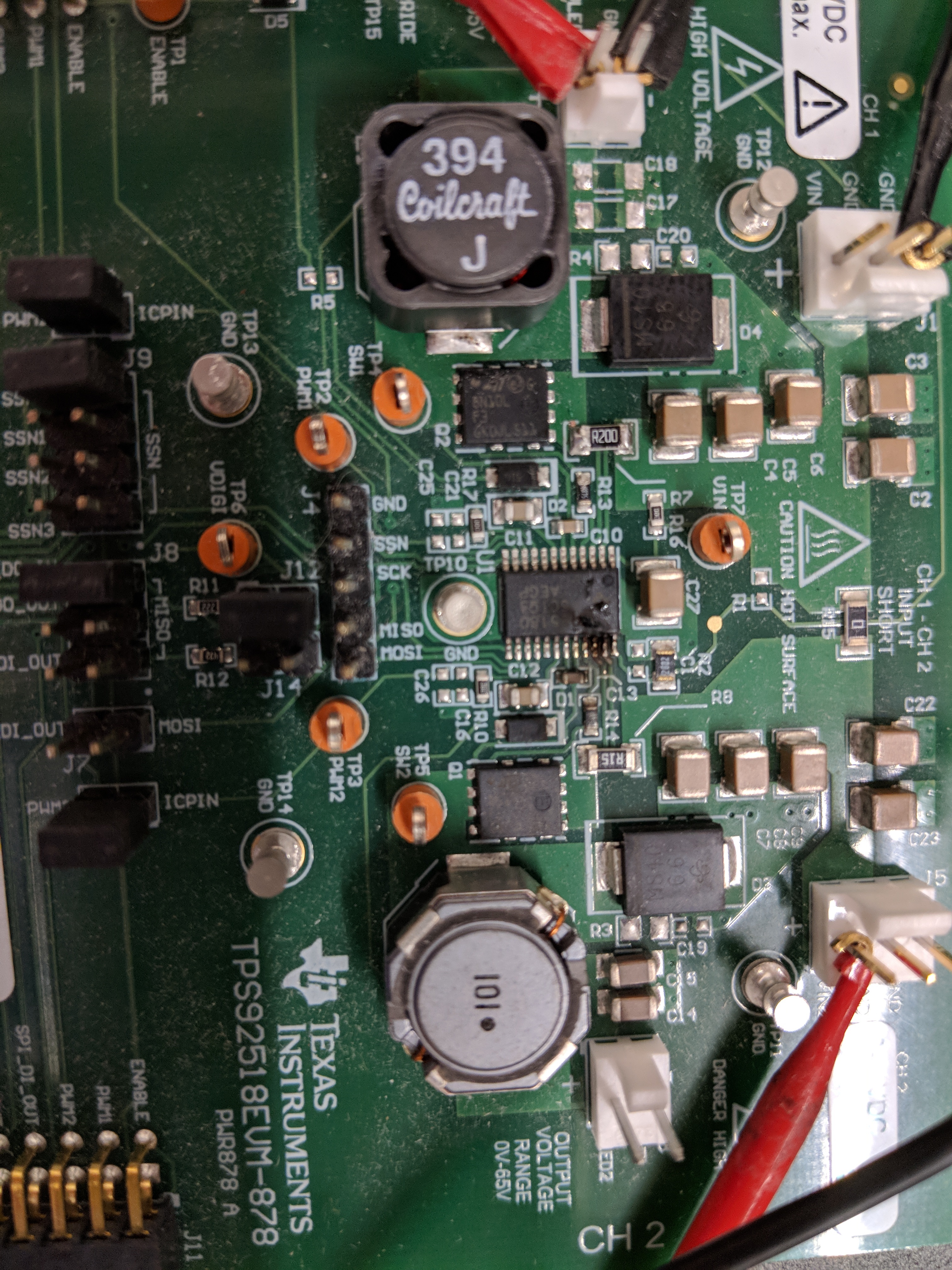Other Parts Discussed in Thread: LM3409HV, TPS92518
I just open circuited my TPS92518HV eval board while it was running and let the smoke out of the TPS92518HV.
In my application it is imperative that the output be allowed to be on and open.
I haven't found anything in the spec about this. Is it possible I messed up the registers and caused this to happen?
I changed a few components on that channel:
1. Inductor to 490 uH.
2. Rsense = 0.2 Ohm
3. Removed the two 1uF output caps.
In the software, I changed the rsense value to 0.2. I had slid the max off time to 255. I had changed the off time, but it was somewhere in the middle. I don't remember the exact value. As far as I know that was the only changes I made.
The circuit was stable and running when I removed the connection. There was an arc at the load and then a flash and snap from the controller on the eval board.
Flames shot out from the upper right corner of the part.
I'm used to the LM3409HV which does not take issue with sudden changes of conductivity.
Three questions:
1. Can I have a replacement part?
2. How do I prevent this from happening in my future design so I can use the chip in my application?
3. Can #2 be implemented on the eval board?
Thanks in advance


